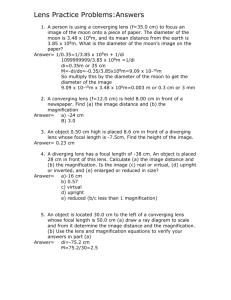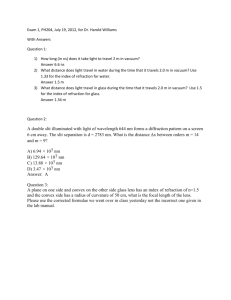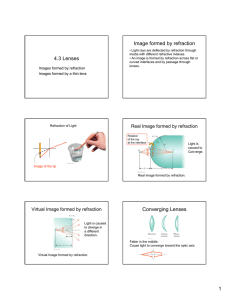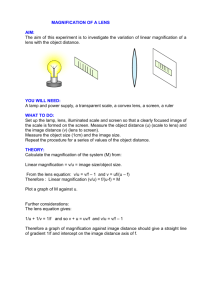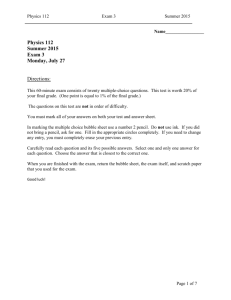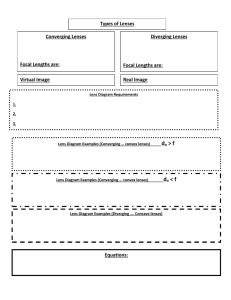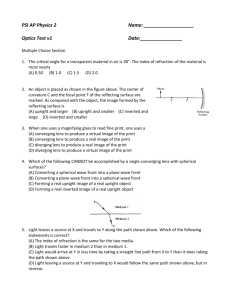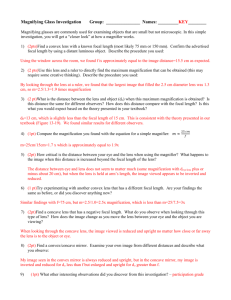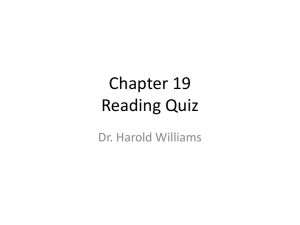n 2
advertisement
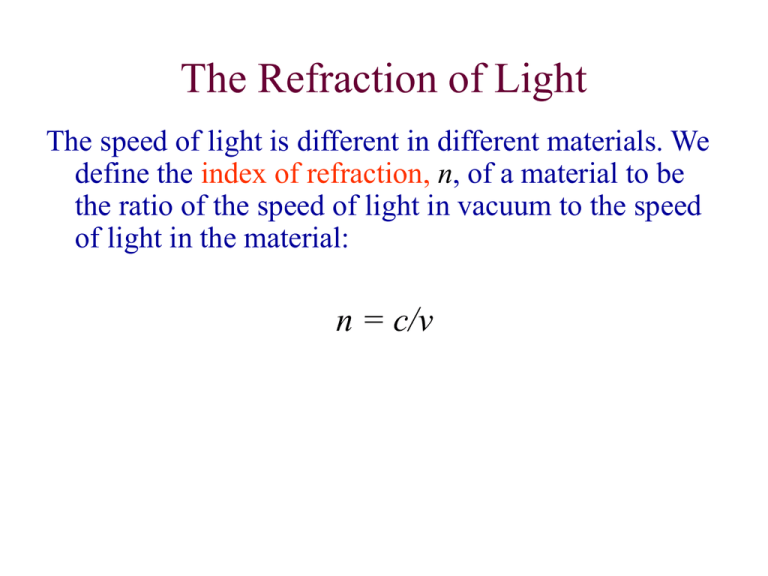
The Refraction of Light The speed of light is different in different materials. We define the index of refraction, n, of a material to be the ratio of the speed of light in vacuum to the speed of light in the material: n = c/v Snell’s Law Normal line q1 Air Glass q2 Question: Which of these rays can be the refracted ray? water n = 1.3 Heavy glass n=2 a) b) c) d) n1sinq1 = n2sinq2 Which way will the rays bend? Which of these rays can be the refracted ray? n1sinq1 = n2sinq2 n = 1.6 n = 1.2 d) c) a) b) Consider the figure below, where x = 16.2 cm and y = 5.10 cm. You have a semicircular disk of glass with an index of refraction of n = 1.52. Find the incident angle q for which the beam of light will hit the indicated point on the screen. answer: 27.2 Lenses Light is reflected from a mirror. Light is refracted through a lens. Focal Point The focal point of a lens is the place where parallel rays incident upon the lens converge. converging lens diverging lens The Thin Lens Equation 1 1 1 do di f Sign Conventions: di is positive for real images (on the opposite side of the lens from the object) di is negative for virtual images (same side as object) Example 1 An object is placed 20 cm in front of a converging lens of focal length 10 cm. Where is the image? Is it upright or inverted? Real or virtual? What is the magnification of the image? Example 1 (continued) An object is placed 20 cm in front of a converging lens of focal length 10 cm. Where is the image? Is it upright or inverted? Real or virtual? What is the magnification of the image? Example 2 An object is placed 5 cm in front of a converging lens of focal length 10 cm. Where is the image? Is it upright or inverted? Real or virtual? What is the magnification of the image? Example 2 (continued) An object is placed 5 cm in front of a converging lens of focal length 10 cm. Where is the image? Is it upright or inverted? Real or virtual? What is the magnification of the image? Example 3 An object is placed 8 cm in front of a diverging lens of focal length 4 cm. Where is the image? Is it upright or inverted? Real or virtual? What is the magnification of the image? Example 3 (continued) An object is placed 8 cm in front of a diverging lens of focal length 4 cm. Where is the image? Is it upright or inverted? Real or virtual? What is the magnification of the image? Dispersion In a material, the velocity of light (and therefore the index of refraction) can depend on the wavelength. This is known as dispersion. Blue light travels slower in glass and water than does red light. As a result of dispersion, different colors entering a material will be refracted into different angles. Dispersive materials can be used to separate a light beam into its spectrum (the colors that make up the light beam). Example: prism click for dispersion animation
